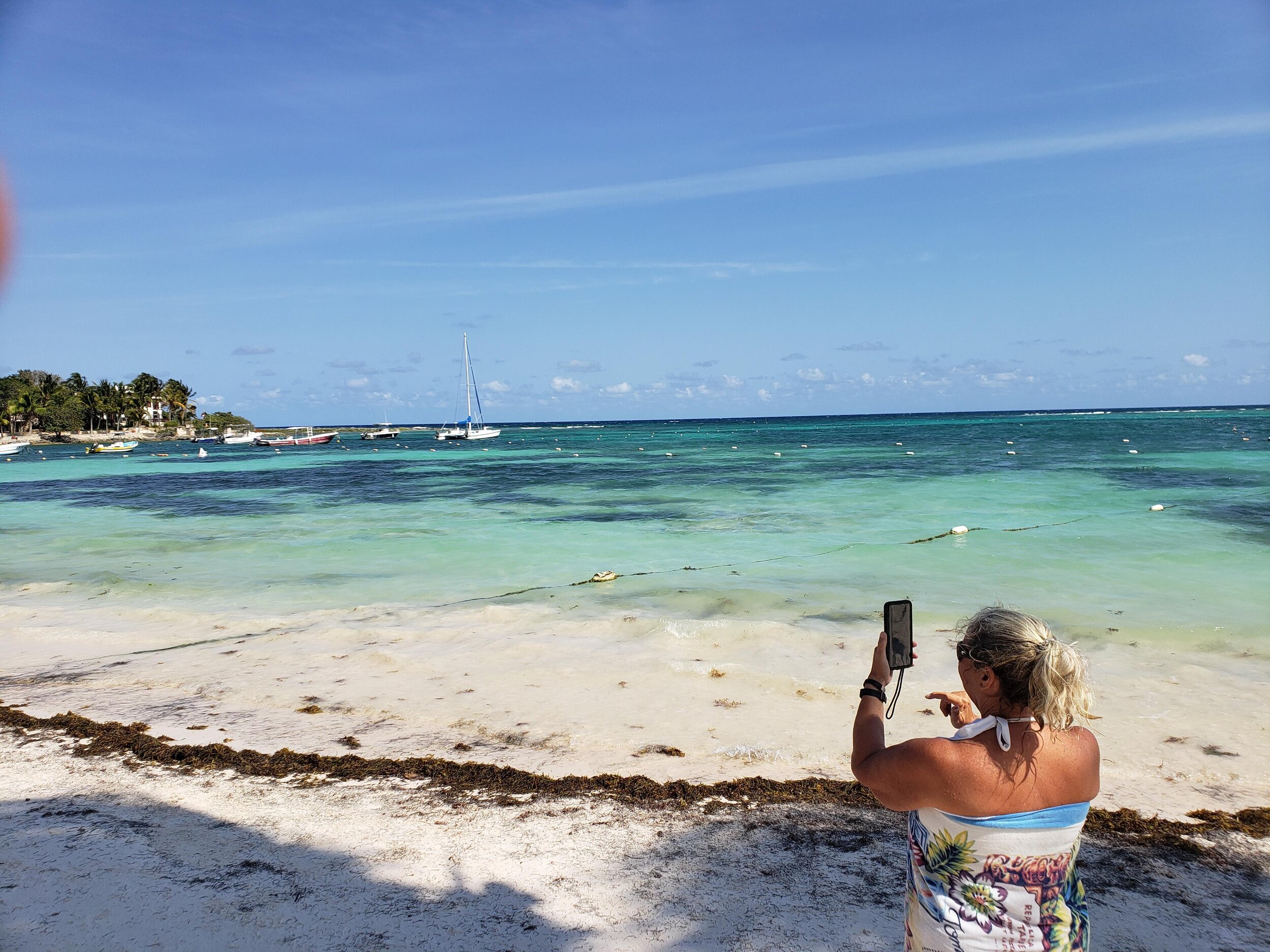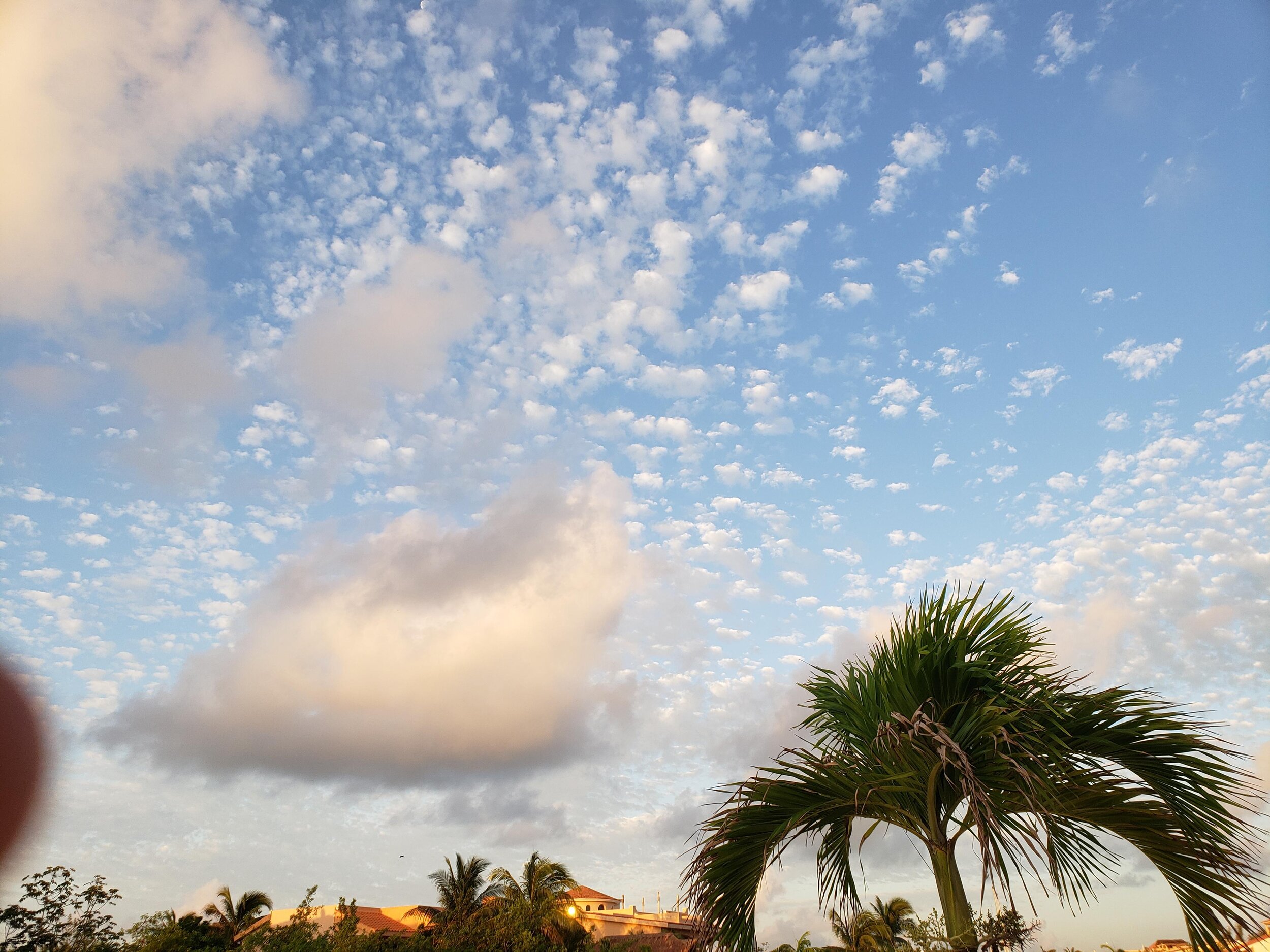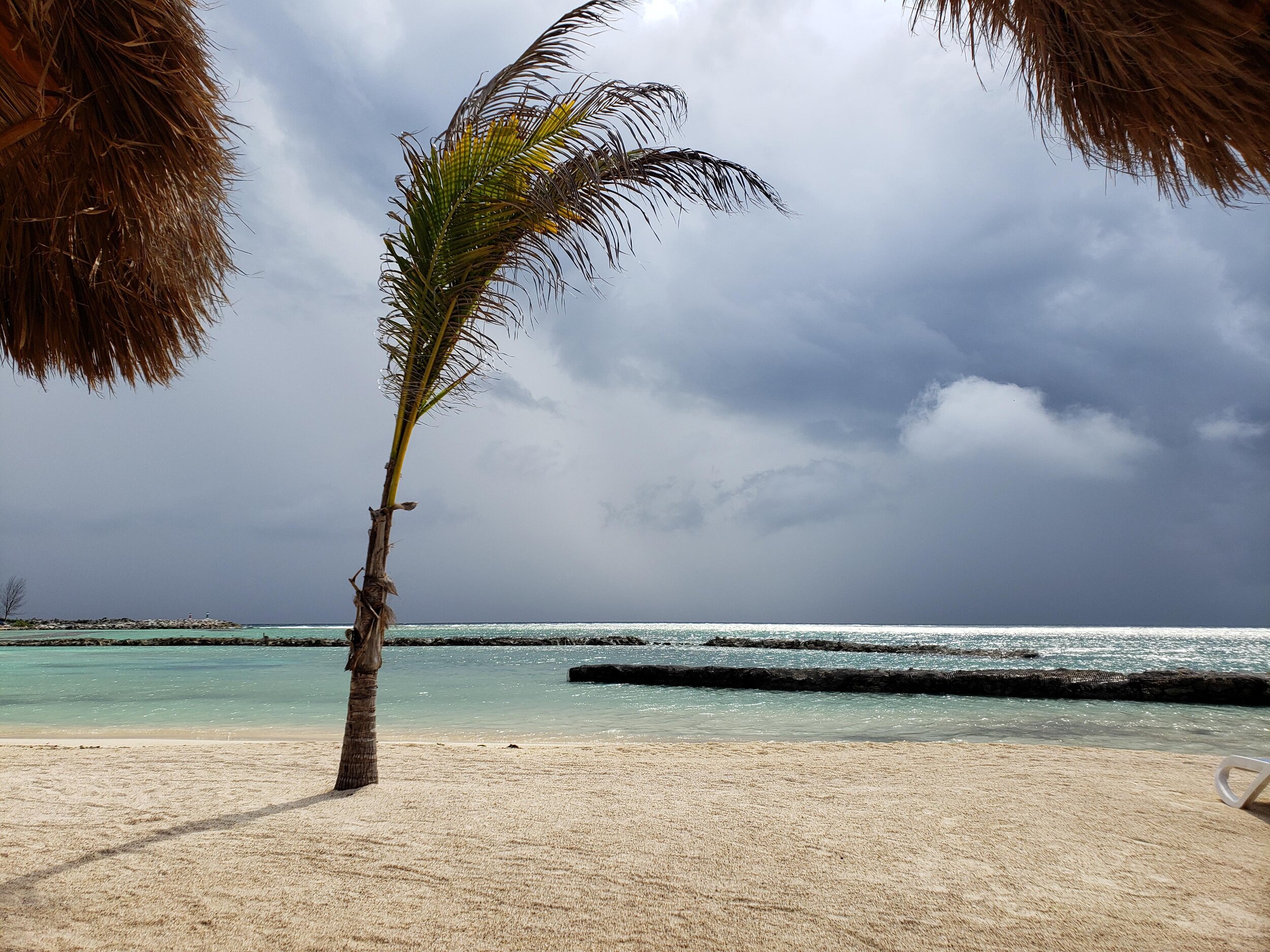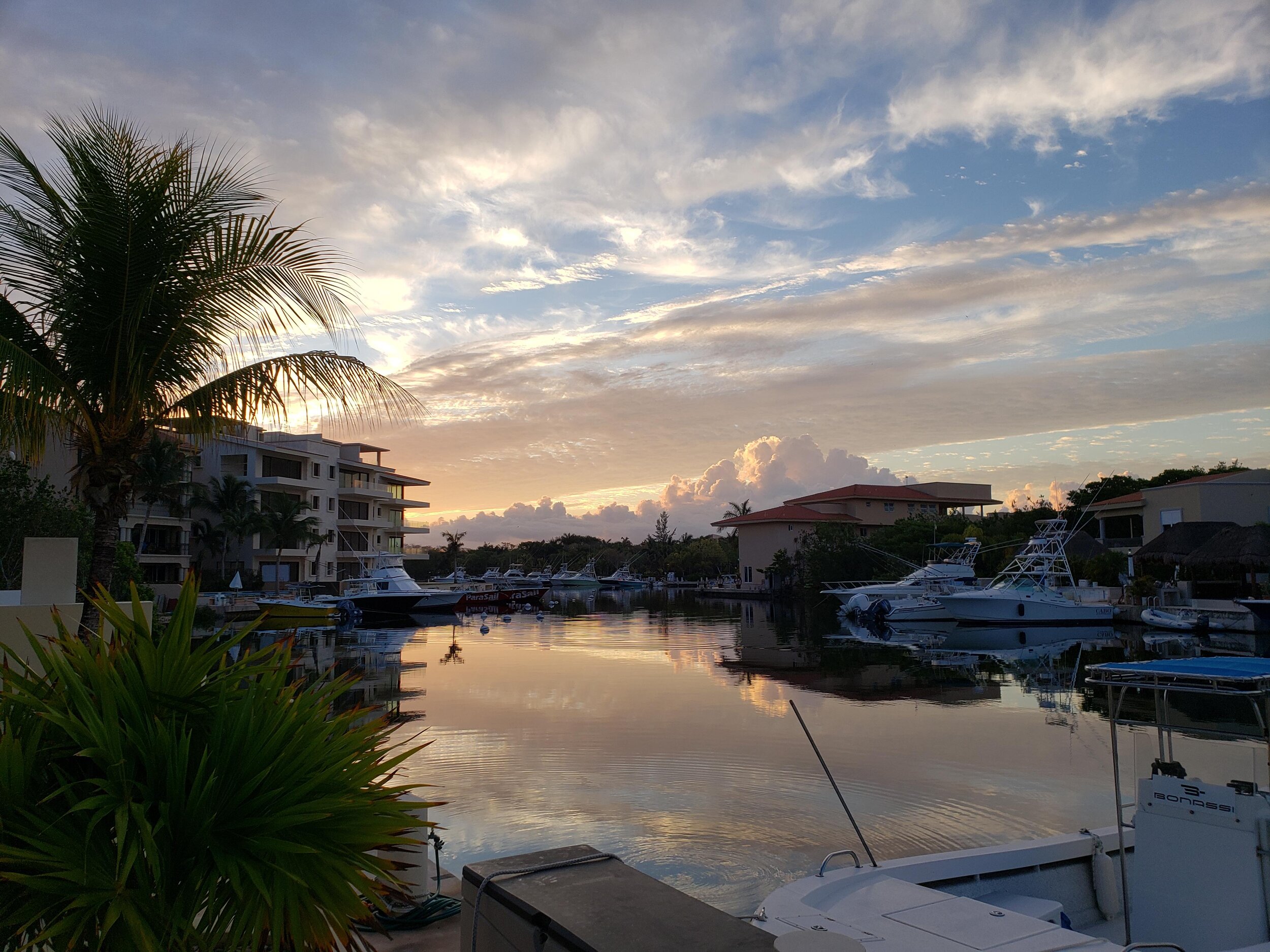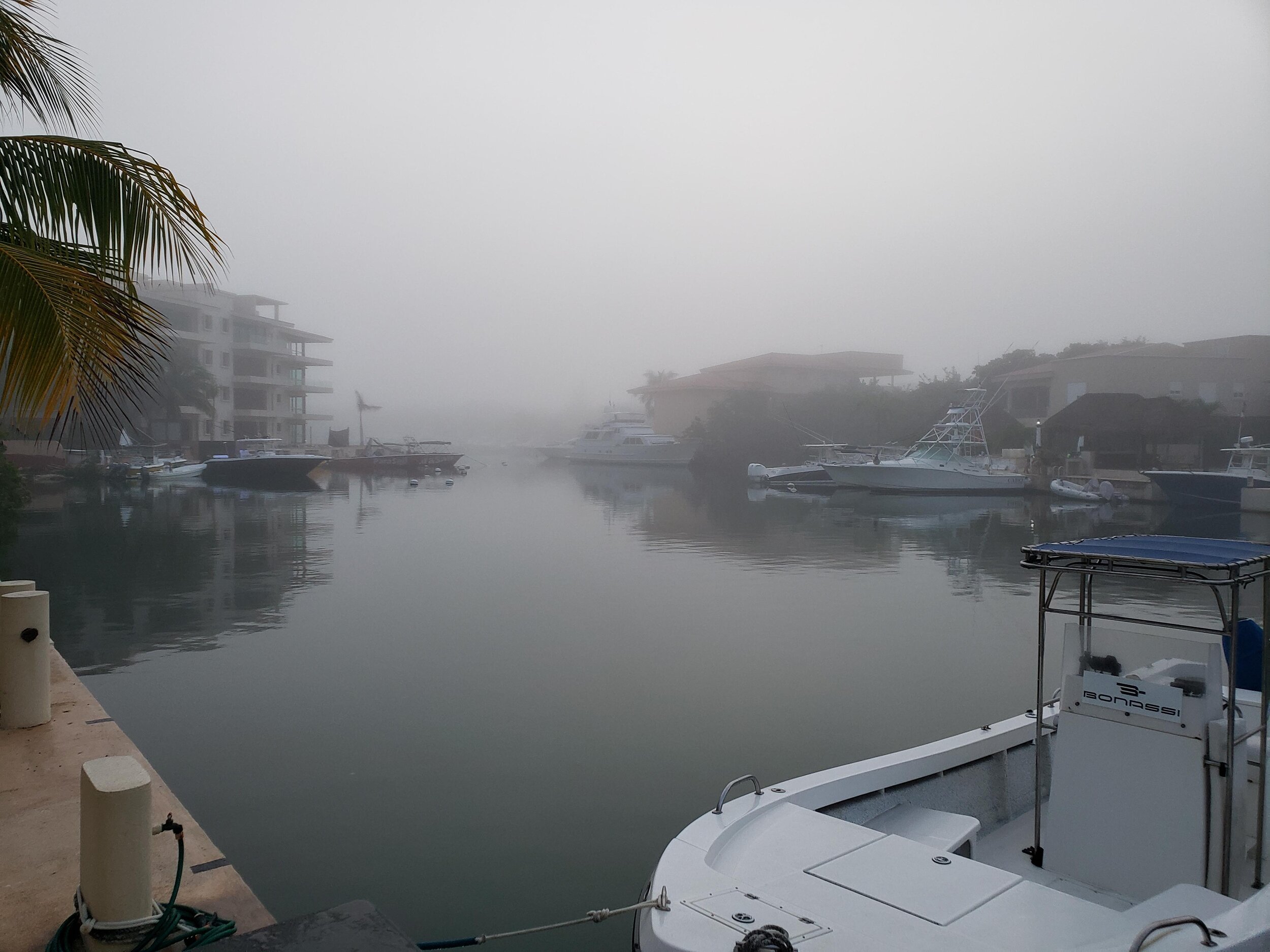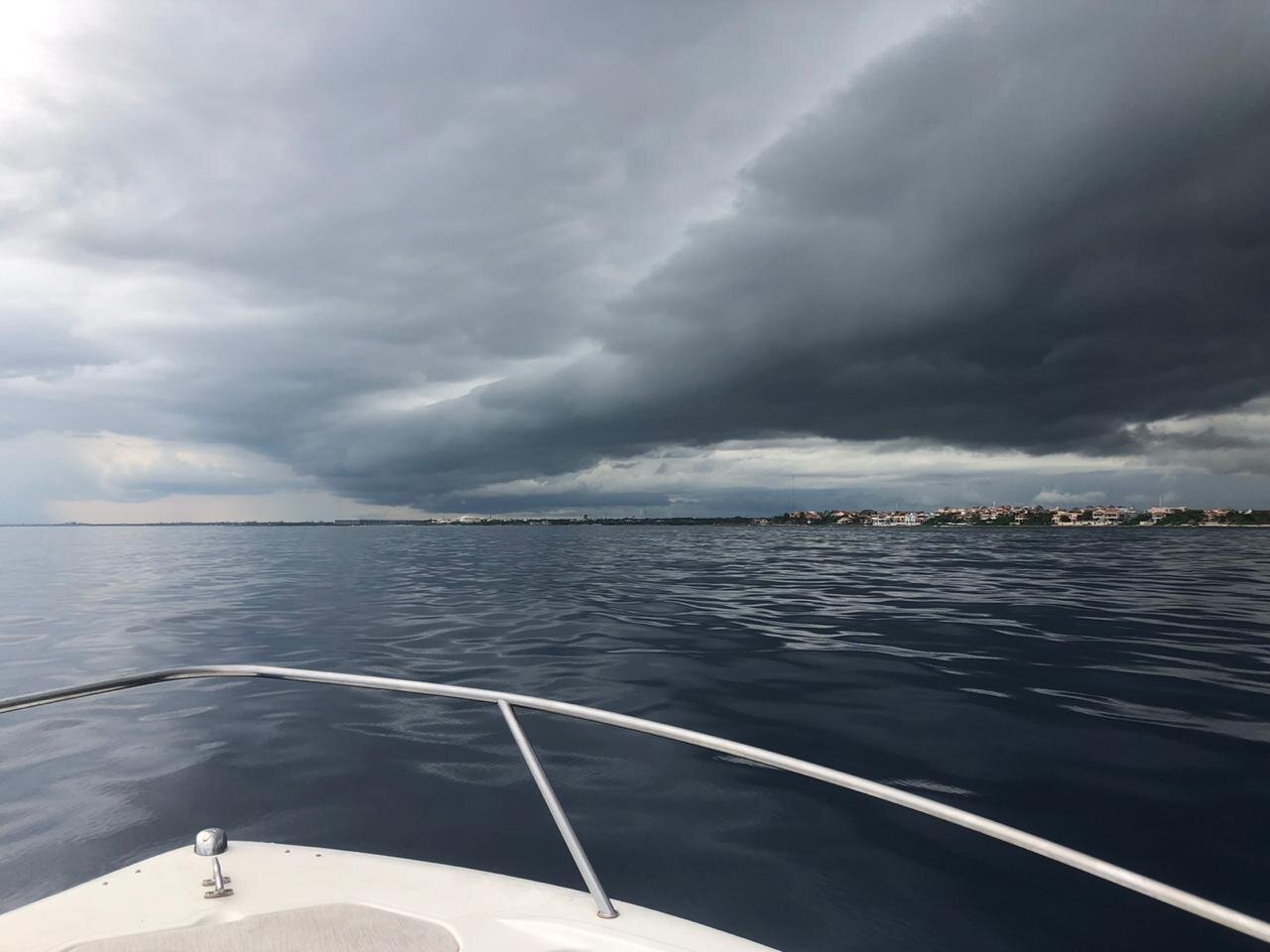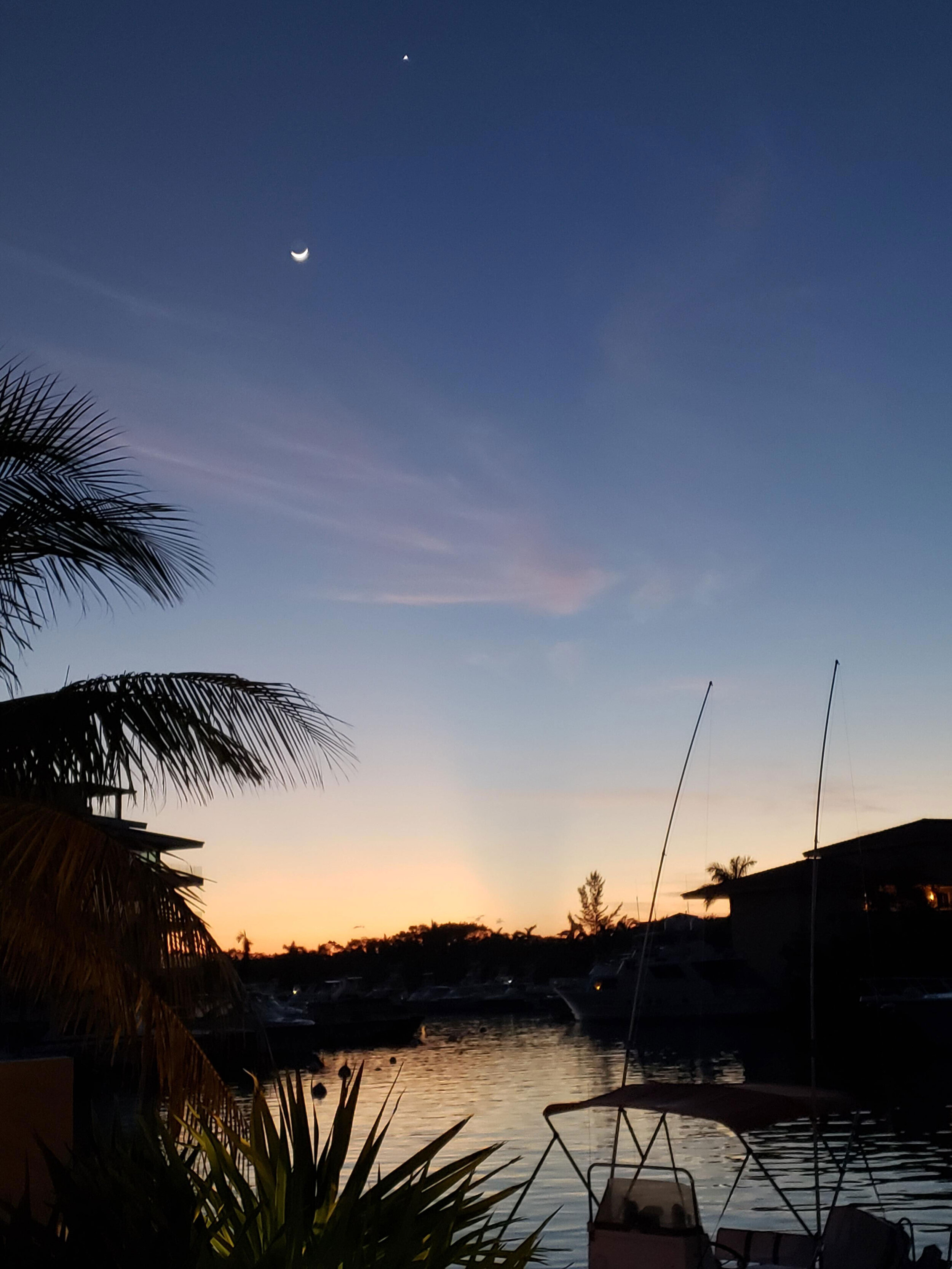Coastal Weather in Quintana Roo
Seeing that we’re almost at our first anniversary of living in Puerto Aventuras, it might be useful for our readers to know a little about the weather we’ve experienced. Let me start by telling you what we knew before moving down here.
Without digging back into our records, I’d hazard to guess that most of our trips down here over the years have been from mid-October to mid-November, February and May-June. We did spend one Christmas season here and I’m sure we’ve been here once or twice in March. But with the rare exception, these trips have not been for more than a week or two and often involved travel to other parts of the Yucatan. So what we knew before now was that there was a dry season and rainy season. That the weather in the Fall could be hot or cooler. Winter could be cooler than cool at night in January and February, and that April was beautiful and crazy busy.
Here’s what we’ve discovered in the last year:
It began Halloween week 2019. And it was HOT! We arrived in a breathless heatwave. I’d say mid-90s and not a hint of breeze. We didn’t know it at the time, but because we live directly on a canal, if there’s no breeze here there isn’t one anywhere. I remember we walked across town to Latitude 20 for their annual Halloween Party arriving totally drenched, or at least I was soaked. Now Latitude is a wide-open, outdoor, covered space that is normally very comfortable. But with only one portable fan and no wind it was full of sticky and sweaty, costumed expats. Memorable, but for all the wrong reasons.
Halloween is the unofficial kickoff of “season.” And the weather we experienced that first week was part of the November range of conditions. Somedays were hot and summery, others breezy and more fall-like. It kind of reminded me of September in Charleston. Too much summer in the beginning with a few teases of fall. But as November flowed into December, the breezes became more consistent and the nights began to cool off. Temperature-wise I’d say the days ranged down from the mid-90s to the low-80s. And for the most part, as I recall, it was dry.
One thing we learned early about the weather in PA was the importance of the breeze. The wind, or lack thereof, pretty much dominates facial expressions. You can tell there’s a nice breeze just by seeing all the smiling faces, especially on full-timers.
But there can also be too much breeze - we call that wind or viento down here. I remember a two-week stretch, either in late January or early February, when it was so windy that the tour boats couldn’t go out. Since that’s a big part of the lifeblood of PA, faces were not happy. No one went out, including the fishing boats. During the winter, at least last winter, too much breeze was more common than not enough. But mostly conditions are ideal. Dry, sunny with a moderating breeze, typically from the northeast.
For those of us who live here, last winter got a little too dry. We live across from Central Park, where I walk Manito every day. By April all the vegetation was horribly stressed, even the trees and bushes in the patches of jungle that still exist were ready to give up the ghost. So when they say “dry season” they’re not kidding. Now we did have a couple of exceptions to the dry. During the winter if a storm is going to come it will come from the north and they call it - wait for it - a norte. Occasionally Quintana Roo will see a really big winter storm. North winds blowing at 80 or 100 KPH accompanied by cold, stinging rain. We didn’t get one of those last year but we did have quite a squall one day, probably not that far off of a bad norte, but it only lasted for an hour or so. Being on the water it’s fun, at least for me, to watch these storms come and go.
Technically, dry season lasts until mid to late May. But over the last 10 years, I’ve read, that the Yucatan has experienced a significant change in the seasonal moisture flow (monsoon). Apparently, summer thunderstorms would arrive by late May and last through October into November, pretty much matching hurricane season. Now the Yucatan jungles remain largely dry into August, which, needless to say, is causing havoc for plants, wildlife and Maya family farmers. Rain storms also used to be very intense, the proverbial sheets of rain. Now they are much more like afternoon thunderstorms in Florida, spotty and not very refreshing. Someone once described rainy season in Costa Rica to us in such a way that it really dissuaded us from considering it as a place to settle. The constant, intense rain he described is more like what the Yucatan used to experience, and what we witnessed this summer was more like today’s normal.
Even though the rain isn’t bad, summer temperatures are not for the faint of heart. Pretty much every day is in the 90s with high humidity. Here, unlike Charleston, the humidity actually goes up during the day. So I’d have to guess that early afternoon average “feels-like temperature” is 100+. And, the great moderator, the breeze, gradually begins to weaken into August and September. I don’t know that the bad days are any worse than the bad summer days in Charleston, but I do know that, by the end of August, the bad days were every day. And remember, nothing but your condo (if you choose to pay to run your AC during the day) and your car, if you have one, is air conditioned. Restaurants are all outside. Supermarkets and big stores are cool, but in Covid times we want to minimize our time in those places. So if you don’t like the heat where you are, don’t move here.
Finally, a word about tropical storm systems. We had 3 this year: Cristobol, Gamma and Delta. These were the first significant systems to approach the Yucatan since Wilma in 2005. This meant that most people here were unfamiliar with how these storms work and what the forecasts mean. Since we’ve been through more than our share of hurricanes during our years in Charleston, I found myself trying to keep people calm. Cristobal was a relatively benign tropical storm that just didn’t want to leave. It developed right off our coast and just pumped in buckets of moisture. Everyone was bailing and mopping for the better part of a week. Gamma was actually pretty bad, reminiscent of Gaston when it hit Charleston as a Category 1. As with that storm, we were on the wrong side of Gamma (front right) and took a pretty good thrashing. Up next was Delta, and it just exploded from a 1 to a 4. The track always had us on the good side, but people were nonetheless scared to death. If a strong tropical storm like Gamma could mess us up, what would a Cat 4 do. Unless it had veered south at the last minute, though, which it wasn’t going to do, I knew we looked pretty good. Fortunately, it held course, and dropped from a 4 to a 2, so we got off with a lot less damage than the weaker storm caused.
So in a couple of weeks we’ll have made it a year in paradise. And even though the weather isn’t always great, I still don’t hesitate to use the “P” word.

